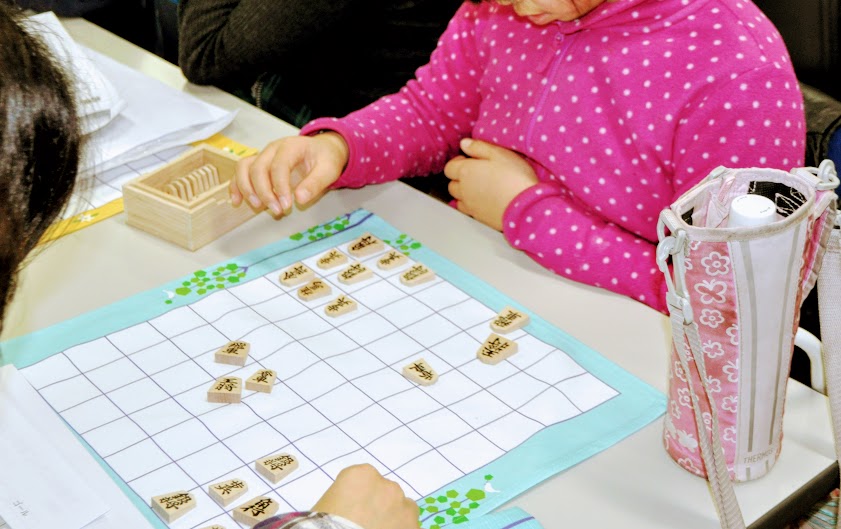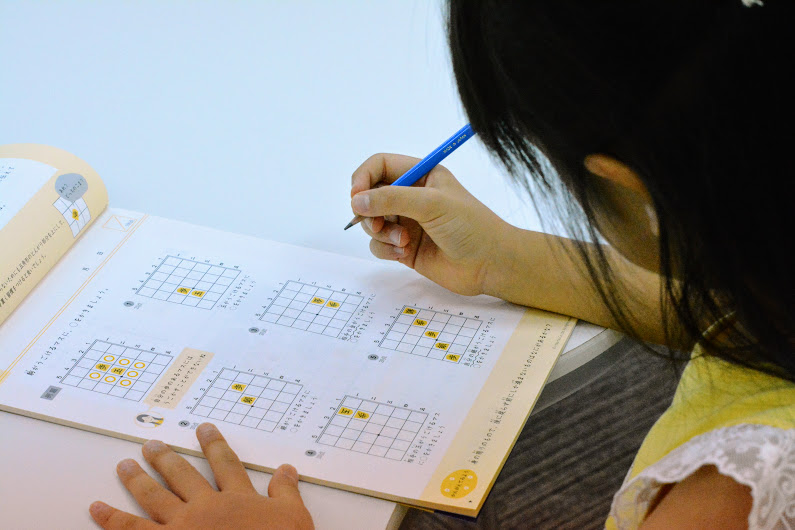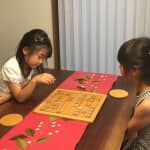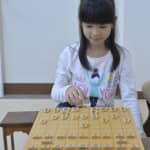Shogi 22 March 2017
Five Tips to Teach Shogi to Novice Children
Generally, instructors teach Shogi through playing games in Shogi classes and practice halls. Therefore, I think that not a few instructors feel puzzled to teach complete novice children who don’t know how to move pieces at all and have never touched Shogi pieces before.
So, today, we would like to introduce some easy tips to teach Shogi to completely novice children.
It could be a rare case for a complete novice child without any knowledge of piece moves comes to a Shogi class. However, I think those novice children should be the biggest target for us to introduce charms of Shogi considering popularization of Shogi.
You might have already experienced what we introduce today, and I am not sure how much help I could be, but hope that you enjoy reading today’s article sharing the common goal of spreading Shogi among children.
1. Let children enhance affinity toward Shogi

I think that quite a few people start with explanation of Shogi piece moves on Day 1. However, I would think that children without any knowledge of Shogi may feel lost if an instructor says, “Hisha can go straight vertically and horizontally” or “Kaku can go any distance diagonally.”
Therefore, I think that children need to get used to Shogi tools such as a board and pieces before learning Shogi rules. We, Shogi instructors see Shogi equipment daily, but complete novice children find Shogi equipment simply unapproachable as difficult Chinese characters are written on pieces and only squares are drawn on Shogi board.
So, first of all, I introduce an easy game using a board and pieces before starting piece move instructions. For example, the simplest game is called “Hasami Shogi (Pincer Shogi)” which uses only Fu (pawn) and Tokin (promoted Fu). There are other easy games called “Yamakuzushi (Mountain pull-down)” and “Mawari Shogi (Round Shogi)” which do not require piece move knowledge. All of the games are very easy with simple rules, and even complete novice children can enjoy them without instructor’s help.
For your information, there are various regional versions of rules for “Mawari Shogi.” You can enjoy games with different local rules each time to prevent children from getting bored.
2. Try to avoid jargons as much as possible.

We, Shogi instructors are unaware of that ordinary people are not familiar to Shogi jargons because we use Shogi terminology daily. I sometimes make puns with Shogi terminology and share them with children, but they do not get them and give me a cold look.
For example, I try to use terms such as “turn over” or “turn around” at first to explain promotion. Also, I say, “You use pieces which you own” to explain “dropping a piece in your hand,” or “address of a piece” for “symbol for a piece,” or “King’s castle” for “castle” so that children can easily visualize the situations.
After spending a certain amount of time in the world of Shogi, we cannot set a clear borderline between Shogi terminology and ordinary Japanese words. After all, children need to learn Shogi terminology someday. Nevertheless, I believe that if we keep it in our mind not to use Shogi jargons for novice children’s instructions, we can accelerate their understanding of Shogi.
3. Let’s combine Shogi instruction and a fun game.

Many Shogi instructors love Shogi very much and make a living out of it. So, they have a lot to say about Shogi to children. I am not an exception, surely. However, looking back my school days, I think that I gained knowledge through homework using my own brain and hands rather than listening to teachers’ lectures. Given that, I value time when children actually touch Shogi board and pieces as they can learn with their body. I try not to spend too much time on my instruction.
For instance, in my Shogi class, children solve Shogi puzzles available on our website, play piece promotion game competition and a game of tag chasing King in which a piece of Kin (gold) tries to capture Gyoku (king). School-age children can acquire the habit of reviewing at home, but it is difficult for very young children to do so. Therefore, I try to let them use their hands and brains as much as possible in my class, and enjoy the class.
4. Let them take a small step.

I think that the upside of taking a small step for learners is that they can make progress at their own pace. Also, from instructors’ viewpoint, it helps instructors to find the points learners are struggling at. Once people have become so well-versed in Shogi to be instructors, then not a few find it hard to figure out novice children’s problems.
As for instruction methods, you give children practice problems after short instruction, and closely watch them to find out the stumbling points.
I myself adopt this method with “Shogi Lesson Book for Beginners Vol.1” to teach novice children in Senkawa Shogi class for parents and children.
I can discover points which many children are apt to make mistakes.
I tell children to feel free to ask me a question if they do not understand something before I start a lesson when holding Shogi events. However, many children seem to hesitate to ask a question feeling a little shy.
If you divide instruction contents into small sections, you need to prepare many practice problem sheets for each section. However, these sheets are not only for children to solve problems but also function as a communication tool between instructors and children by grading the problems and commenting on them. These sheets may also help children to maintain motivation. I hope you can make your own good way to use of them.
If you do not have enough time to create your own problem sheets, you can use “Shogi Lesson Book for Beginners Vol.1” available at our website. The contents are divided into small sections and it helps instructors to make good communication with children.
5. Let’s talk about something different from Shogi, occasionally.

If we talk about something different from Shogi in a class, the talk is considered idle.
No, that is not true. If children have never played Shogi before, that means they have not known charms of Shogi yet. So, if you talk only about Shogi to them unilaterally, children cannot understand it or enjoy it.
So, let’s talk about something different from Shogi. We can talk about something interesting to children and they are eager to talk to others such as their school, extracurricular activities, places where they visited for vacation and so forth. I try to make good friends with them. I myself enjoy such a time with children as I get to know their world. It needs courage to enter a new world even for adults. Children find it further difficult. We, instructors should approach to children first and show our interest in them so that children would also open their minds to us as well. I think that helps us to succeed in a Shogi class.
I have shared some tips to teach Shogi to novice children today. How was it? I think that there are plenty of children who have never played Shogi in the world. I hope to introduce charms of Shogi well to them so that more and more children would come to enjoy Shogi.



